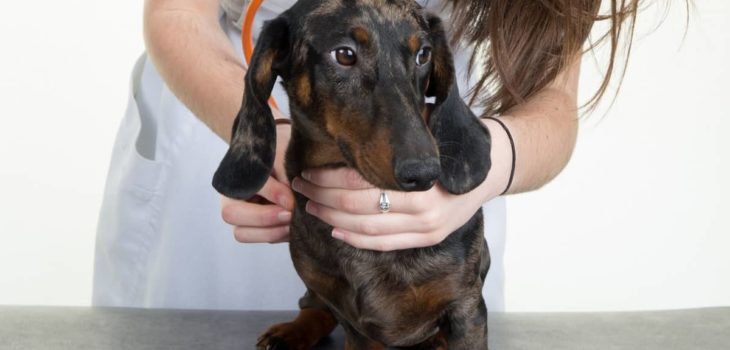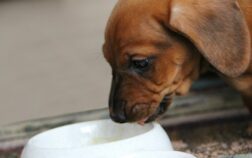Researching the potential health issues of a certain breed can be stressful. For example, what is this color dilution alopecia dachshund dogs struggle with? Is it severe, and does it have some major health consequences? Is it similar to the alopecia humans sometimes experience? We’ll try to explain it in detail below.
What Kind Of Condition Is The Color Dilution Alopecia Dachshund Dogs Often Have?
CDA is one of those hereditary conditions that breeders haven’t yet managed to deal with. It’s passed from parent to child and, even though it’s a fairly obvious skin problem, it often appears later in life, hence why many breeders only spot it after they’ve bred the dog a few times.
The condition itself, while annoying and unpleasant, is a pretty simple skin and hair issue, similar to alopecia in humans. It affects dogs with the color dilution gene (dd) such as blue and fawn dachshunds, and it leads to dry and flaky skin, as well as hair loss. It’s not curable but it is treatable.

Learn more about 20 Different Colors Of Dachshunds
What Are The Symptoms Of Color Dilution Alopecia Dachshund Dogs Exhibit?
CDA can be noticed in a dog as early as its 6th month birthday. It does tend to happen later, typically once the puppy becomes a full-fledged adult. This does make it harder for breeders to stop the hereditary spread down further generations as they’ve usually already started breeding the dog before they notice the problem.
If you are to catch CDA early, you’d have to look for any of the following symptoms:
- Dry or broken hairs aka stubble alopecia
- Dry and flaky skin
- Hair loss
- Skin bacterial infections
- Pruritus or severe itching
Noticing any of these symptoms isn’t going to help you prevent the color dilution alopecia, of course – it’s just a sign to start treating the symptoms and not breed the dog.
How Common Is Color Dilution Alopecia In Dachshunds Exactly?
It’s hard to say exactly how common the condition is as there’s no hard data on the percentage of dogs it affects. We do know that it will only affect dogs with the dilute gene, however, so you should only be worried if you’ve got a blue or fawn Doxie. For any other coat color type, the risk is basically zero.
Even with blue and fawn dogs, however, this isn’t something that’s all that prevalent – there is a significant risk but far from all or even most dogs develop the condition.
Can CDA Lead To Other Problems?
Not any major or life-threatening ones, no. The only issues an untreated color dilution alopecia can cascade into are things such as a bacterial infection or bald spots. Of course, bacterial infections themselves can lead to more serious problems but the infection itself can appear with or without CDA.
In either case, if the affected dog is a household pet, you’d probably want to get the CDA in check before it’s gotten to that point regardless.
How To Treat Color Dilution Alopecia?
While there is no known cure for color dilution alopecia dachshund dogs can benefit from so far, managing the condition is not that complicated.
Consulting your vet is obviously the first thing you’d want to do but he or she would likely recommend a fairly straightforward treatment regime including a specialized shampoo, certain ointments, and rinses, as well as some dietary supplements or a full dietary switch to a more nutritional diet. On rare occasions, your vet may also prescribe you some oral antibiotics for a little while.
Which Other Breeds Also Suffer From CDA?
There are quite a few breeds that commonly suffer from this condition, a lot of them as popular as the Doxies themselves. Here are the most frequent victims of the condition in alphabetical order:
- Bernese mountain dogs
- Boston terriers
- Chihuahuas
- Chow chows
- Great Danes
- Irish setters
- Italian greyhounds
- Newfoundlands
- Salukis
- Schipperkes
- Shetland sheepdogs
- Standard poodles
- Yorkshire terriers
- Whippets
Is The Color Dilution Alopecia Dachshund Predisposition Something That Should Turn You Away From The Breed?
It’s every dog owner’s right to make their own mind but, as far as we’re concerned, color dilution alopecia is far from a serious enough reason not to get a dachshund. Yes, seeing the untreated condition can feel daunting but it’s actually quite an easy issue to manage. It may not be treatable but it can be kept in check with minimal effort and it’s not life-threatening. Dachshunds can suffer from much more unpleasant health problems such as back and joint issues, obesity, diabetes, and more.
FAQs
[rank_math_rich_snippet id=”s-35de7eac-9062-41af-a0fa-3ed51484e1ca”]




